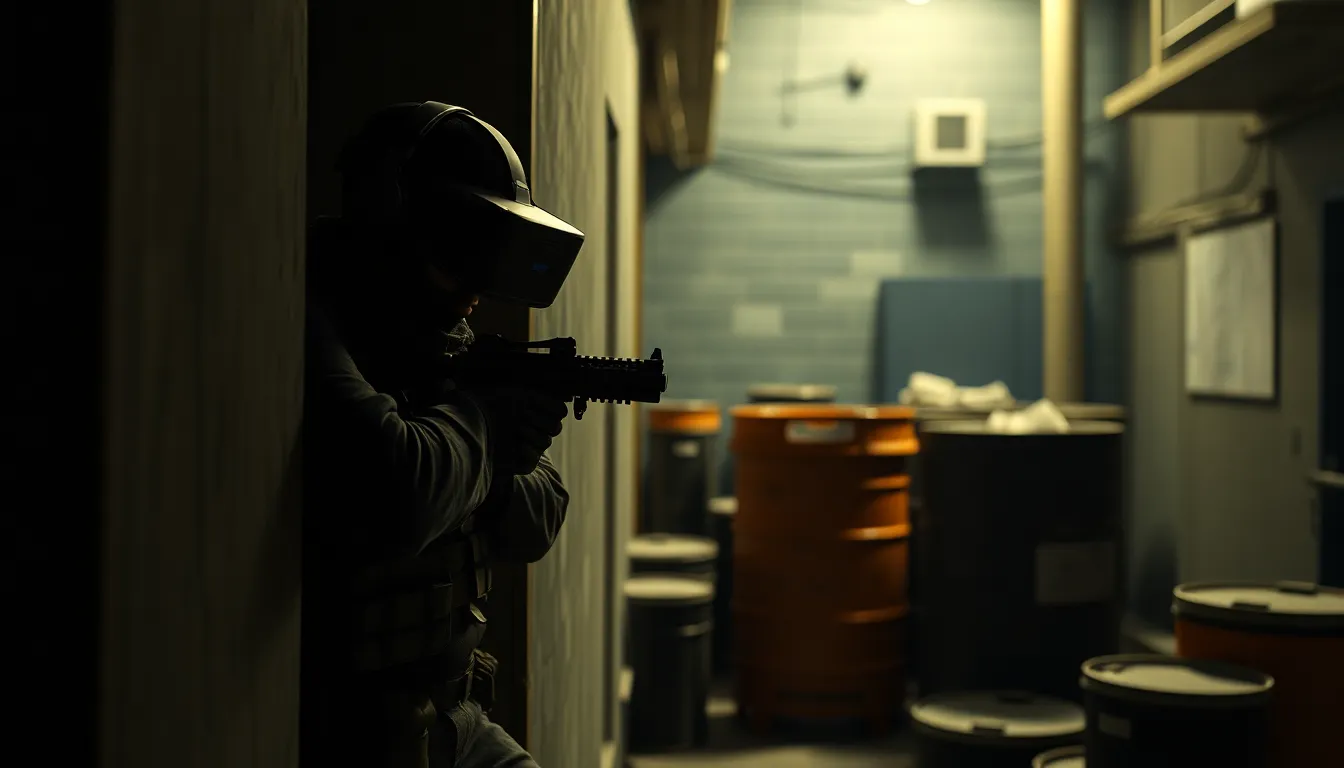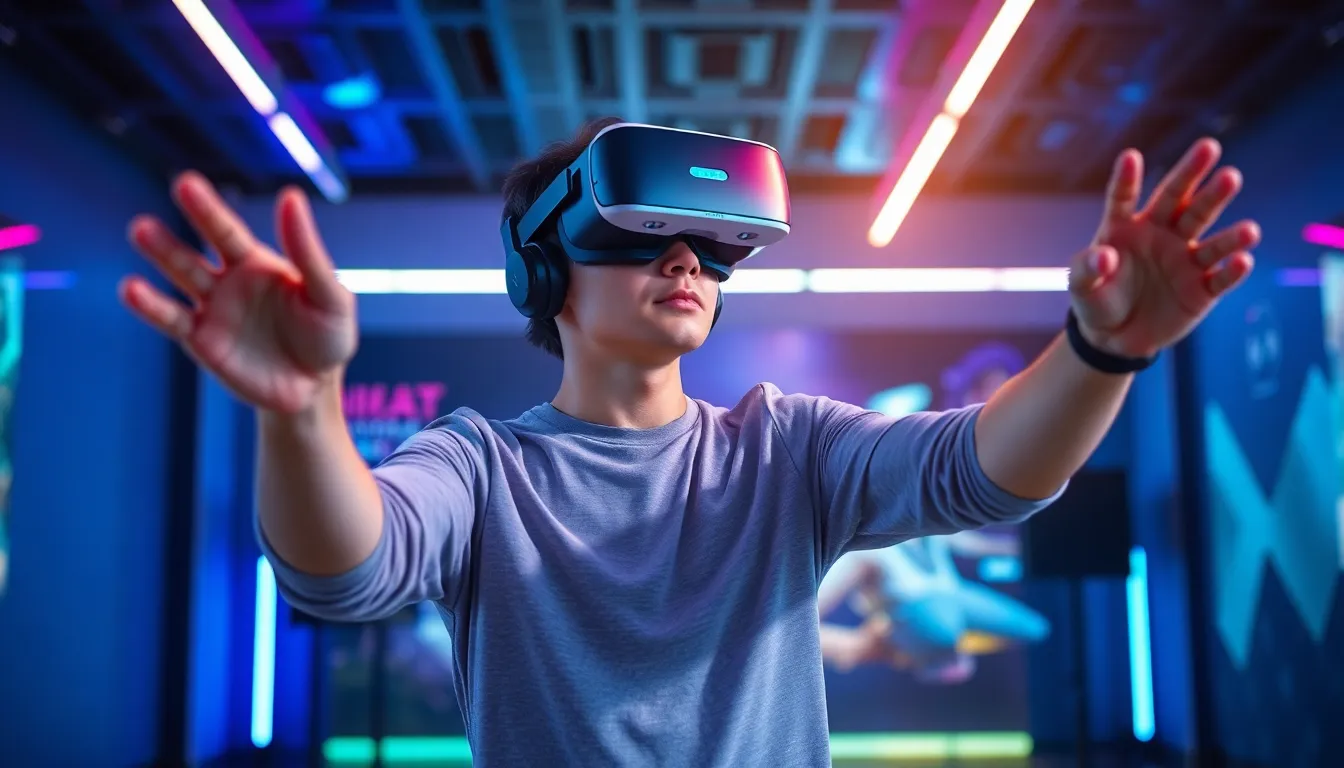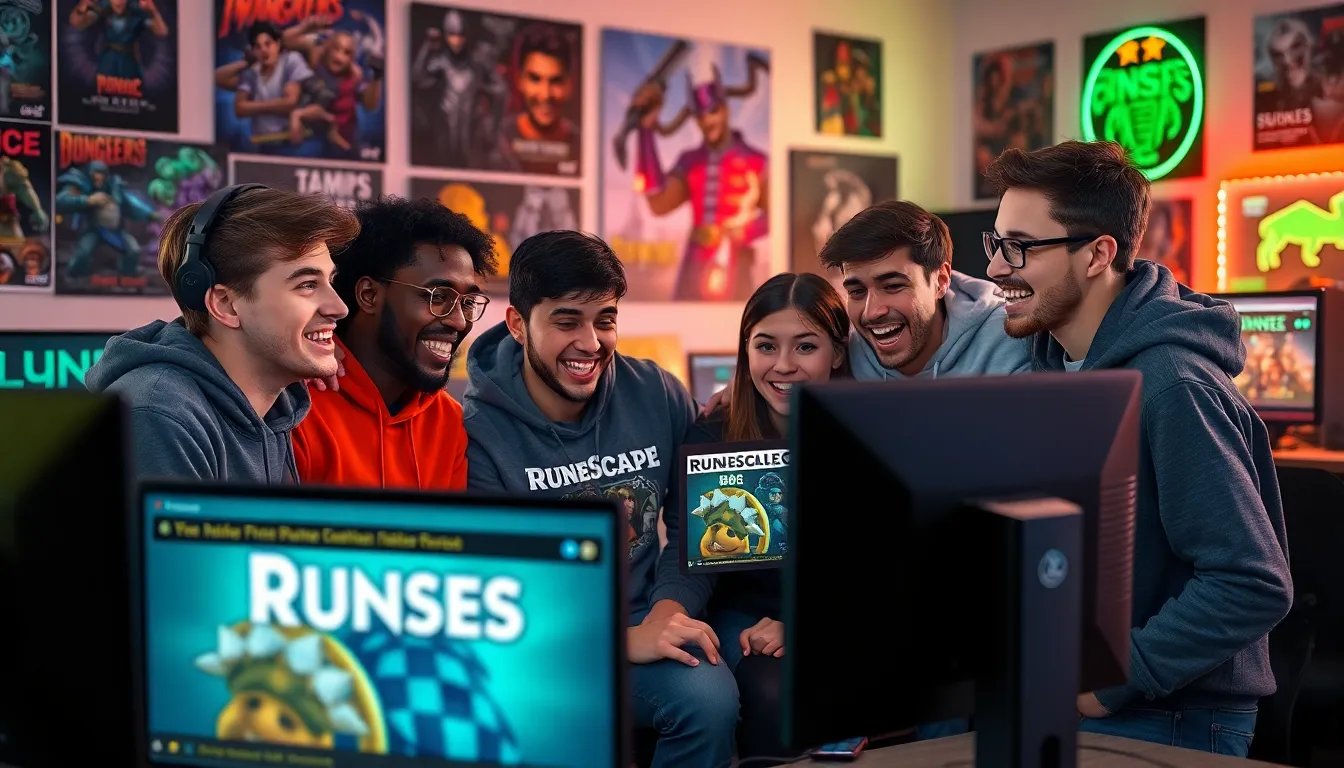Virtual reality has taken the gaming world by storm, and when it comes to stealth games, it’s like stepping into a thrilling heist movie where players are the stars. Imagine sneaking past guards while physically crouching behind virtual crates. It’s not just a game; it’s a full-body workout in stealthy finesse.
In this immersive realm, VR stealth game mechanics are the secret sauce that keeps players on the edge of their seats. From heart-pounding moments of hiding in the shadows to the exhilarating rush of outsmarting enemies, these mechanics transform ordinary gameplay into an unforgettable experience. Get ready to dive deep into the art of stealth where every move counts and every sound could be your last.
Table of Contents
ToggleOverview of VR Stealth Game Mechanics
VR stealth game mechanics create a unique gaming experience by placing players in immersive environments. Players often feel as though they physically inhabit their characters, allowing for more engaging interactions with surroundings.
Sound design plays a crucial role in these mechanics. Audio cues indicate nearby enemies and environmental hazards. Players must listen for footsteps or shifts in their opponents’ positions, enhancing awareness and strategy.
Movement mechanics differ significantly in VR stealth games. Many titles utilize localized movements, allowing players to crouch, sneak, or even hide behind cover. This technique promotes more realistic body dynamics, making sneaking around obstacles feel authentic.
Environmental interaction is key. Players manipulate objects in their surroundings to create distractions or hide themselves efficiently. Using crates or furniture to obscure their presence becomes second nature as they navigate through levels.
Enemy AI adds another level of complexity. Many stealth games incorporate advanced algorithms that allow enemies to react dynamically to player actions. This interplay requires players to adapt their strategies continuously.
Lastly, stealth mechanics in VR games often reward patience and precision. Taking time to observe enemy patterns and waiting for the right moment to strike enhances the overall experience. Open-world settings provide varied pathways to complete objectives, ensuring that players engage in strategic thinking throughout.
Through these mechanics, VR truly transforms stealth gameplay into a heightened, immersive experience.
Key Elements of Stealth Mechanics

Stealth mechanics in VR games enhance immersion and excitement. Several key elements contribute to this experience, engaging players in strategic gameplay.
Stealth Movement
Movement mechanics play a critical role in VR stealth games. Players duck, crouch, and tiptoe, creating realistic motion that affects gameplay. Engaging with the environment lets players maneuver behind obstacles or around guards. Analog control enhances responsiveness, allowing for precise movements. Players can stealthily approach enemies or escape unnoticed. Each movement decision increases stakes, promoting tension and realism.
Hiding and Cover Systems
Cover systems enable players to hide and blend into environments. Players utilize walls, furniture, and natural elements to evade detection. Physical interactions facilitate strategic choices, as players choose when to remain hidden or when to scout for paths. Cover mechanics vary from game to game, with some incorporating dynamic elements. Players feel immersed as they assess surroundings and plan movements carefully.
Sound and Awareness
Sound design significantly impacts awareness, guiding player strategies. Audio cues alert players to nearby enemy movements or potential dangers. Players react based on the sounds they hear, adapting tactics for stealth or evasion. Each noise, from footsteps to environmental sounds, shapes decisions. High-quality audio enhances immersion, creating a rich strategic layer within gameplay. Players rely on sound to navigate stealthily without compromising their safety.
Player Interaction in VR
Player interaction in VR stealth games enhances immersion and elevates gameplay. Players engage with environments in a more realistic manner, utilizing mechanics like object manipulation and environmental interactions.
Object Manipulation
In VR stealth games, object manipulation plays a crucial role in gameplay dynamics. Players can physically grasp and move items within the environment, using them to distract enemies or create noise. Tactile feedback allows for an engaging experience, making each action feel significant. Specifically, players may throw objects to divert attention or pick up tools for silent takedowns. This level of interaction fosters creativity in strategy, as individuals experiment with different ways to achieve objectives.
Environmental Interactions
Environmental interactions further deepen player engagement in stealth gaming. Players can hide behind furniture, peek around corners, or navigate through tight spaces. The ability to physically crouch or lean enhances the realism of stealth mechanics. Designed spaces contain various elements that players manipulate to their advantage. Crouching behind obstacles increases concealment, while stealthy movement through shadows provides additional protection. Overall, these interactions heighten tension and encourage strategic planning, making each encounter a thrilling experience.
Designing Immersive Stealth Experiences
Creating an engaging stealth experience in VR relies on thoughtful design choices and mechanics. Attention to level layout and AI behavior enhances immersion and strategic depth.
Level Layout and Design
Effective level layouts encourage exploration and tactical movement. Players navigate spaces designed with multiple routes, allowing for varied strategies. Verticality adds layers of complexity, creating opportunities for advantageous positioning. Hiding spots are strategically placed, enhancing players’ ability to remain unseen. Designers incorporate interactive elements, such as doors and cover, which promote player creativity. This layout fosters a sense of agency, as players control their approach to challenges, adapting their tactics as the situation demands.
AI Behavior and Responses
Dynamic AI behavior significantly impacts gameplay. Enemy awareness adjusts based on players’ actions, requiring continuous adaptation. AI reacts to environmental changes, like noise from object manipulation, alerting nearby enemies. Realistic patrol patterns create tension, as players must evaluate risks before proceeding. Additionally, AI can communicate with one another, enhancing the challenge by increasing coordination. This responsiveness to player strategies encourages strategic thinking and planning, resulting in a more immersive stealth experience.
The evolution of VR stealth game mechanics has redefined how players engage with the genre. By immersing players in a world where every sound and movement matters, these games create a unique tension that traditional gaming can’t replicate. The combination of advanced sound design, realistic movement, and dynamic AI enhances the overall experience, making each stealth mission a thrilling challenge.
As developers continue to innovate, the potential for even more engaging gameplay experiences in VR stealth games is immense. The focus on environmental interaction and strategic decision-making ensures players remain invested in their virtual heists. Ultimately, VR stealth games are not just about hiding and sneaking; they’re about creating memorable moments that keep players coming back for more.








